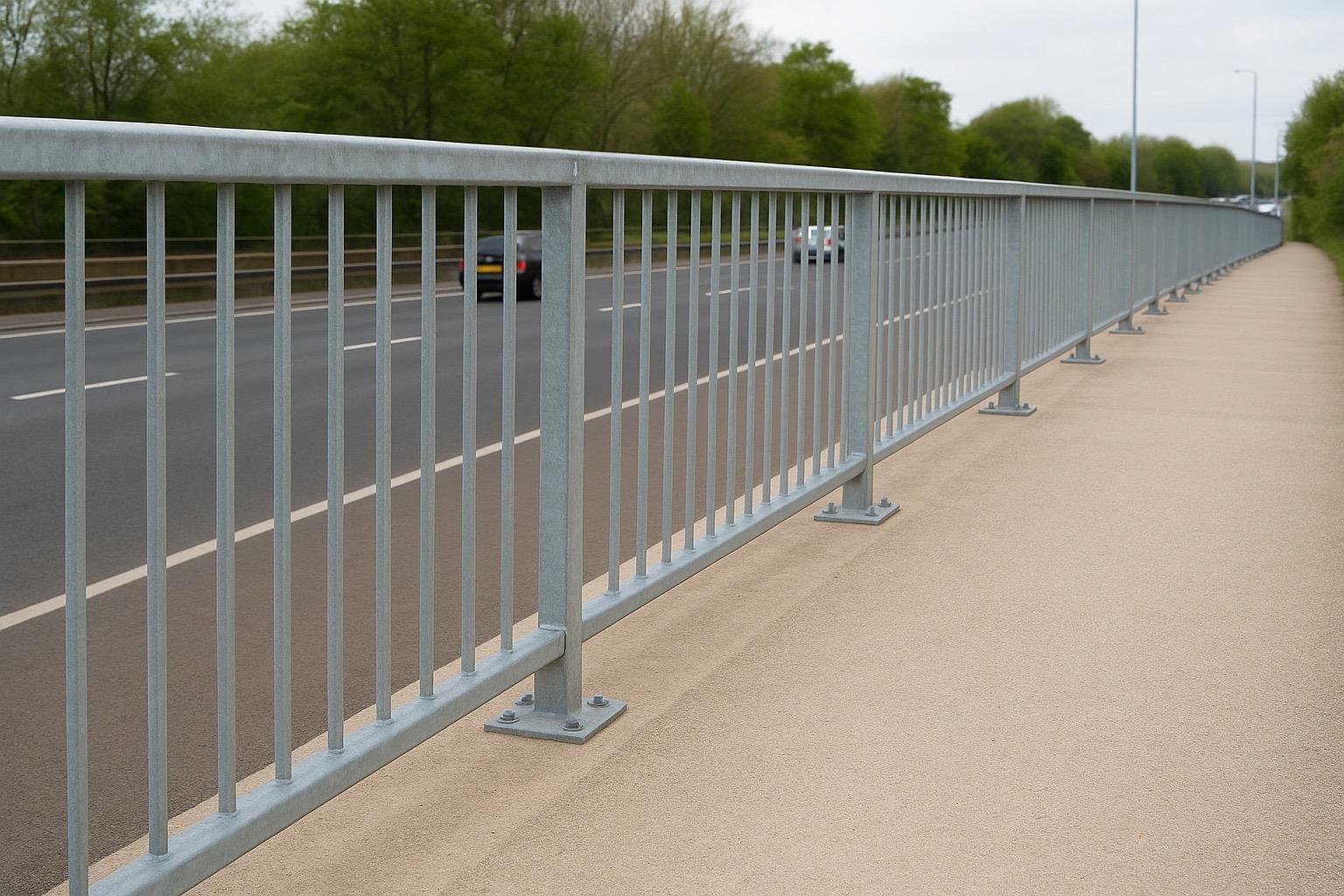A pedestrian guardrail is a protective barrier designed to guide, control, and protect pedestrians from potential hazards—especially near roads, bridges, or elevated walkways.
Here’s a clear explanation 👇
🧱 Definition
A pedestrian guardrail is a metal or concrete railing system installed along footpaths, bridges, medians, or near traffic lanes to prevent pedestrians from:
- Accidentally stepping into live traffic,
- Falling off elevated structures,
- Crossing roads at unsafe points.
⚙️ Purpose
Safety: Prevents pedestrians from entering the carriageway or falling from elevated edges.
Guidance: Channels pedestrian movement toward designated crossing points.
Separation: Provides a clear physical barrier between pedestrian and vehicular movement.
Support: In some cases (like bridge footpaths), it doubles as a handrail.
📏 Typical Design Features (as per IRC:5 & IRC:6)
Height: Usually between 1.1 m and 1.2 m above walkway level.
Load resistance: Should withstand a horizontal load of 0.36 kN/m (for pedestrian areas) or impact load from vehicles if located adjacent to traffic.
Material: Commonly made of mild steel, galvanized steel, aluminum, or RCC.
Finish: Hot-dip galvanized or painted for corrosion protection.
📘 IRC Reference
IRC:5-2015 – Section 209: Railings and Parapets
IRC:6-2017 – Clause 215: Pedestrian Load on Railings
These specify the requirements for dimensions, loading, and design considerations for pedestrian guard rails.
Design Guidances
According to IRC:5-2015 (Standard Specifications and Code of Practice for Road Bridges, Section I – General Features of Design) and IRC:6-2017 (Loads and Stresses):
Pedestrian guard rails (also called crash barriers or railing for footpaths and medians) are structural safety elements meant to resist the load from pedestrians and, where applicable, impact loads due to vehicles.
Clause 209 of IRC:5-2015 and Clause 214 of IRC:6-2017 specify that:
The design of the guard rail or crash barrier should consider the loading due to possible impact from traffic.
For pedestrian guard rails adjacent to traffic lanes, vehicle impact loads must be considered in design.
Pure pedestrian areas (such as foot overbridges or walkways) may only require horizontal load of 0.36 kN/m applied at 1.1 m height as per Clause 215 of IRC:6-2017.
